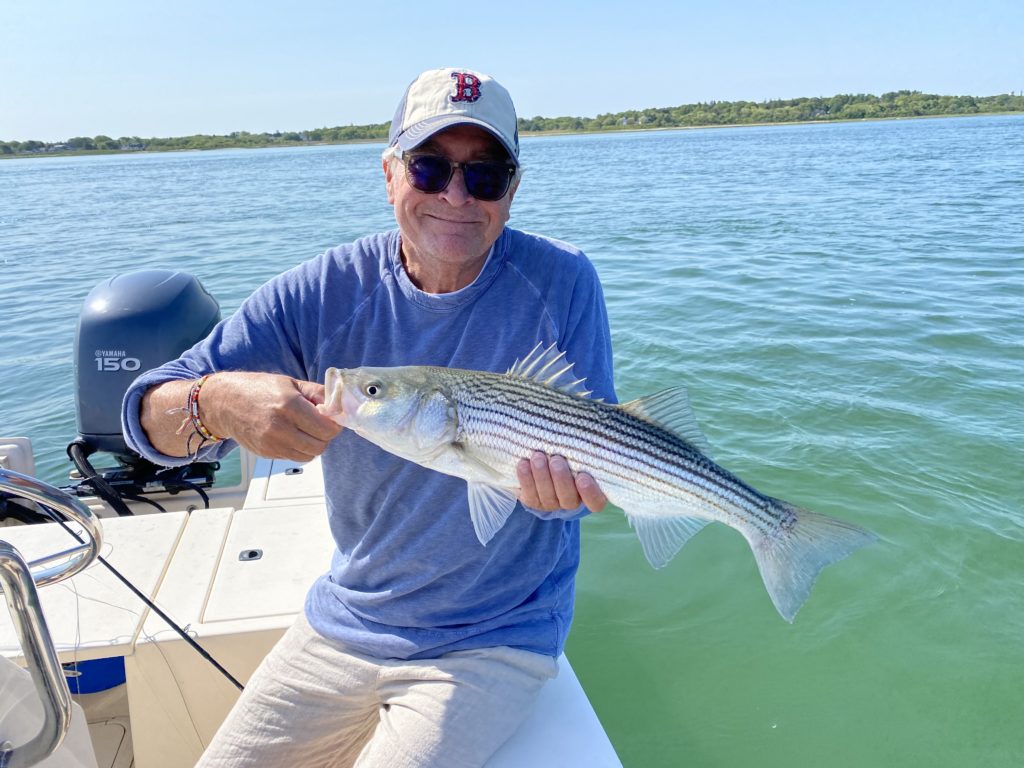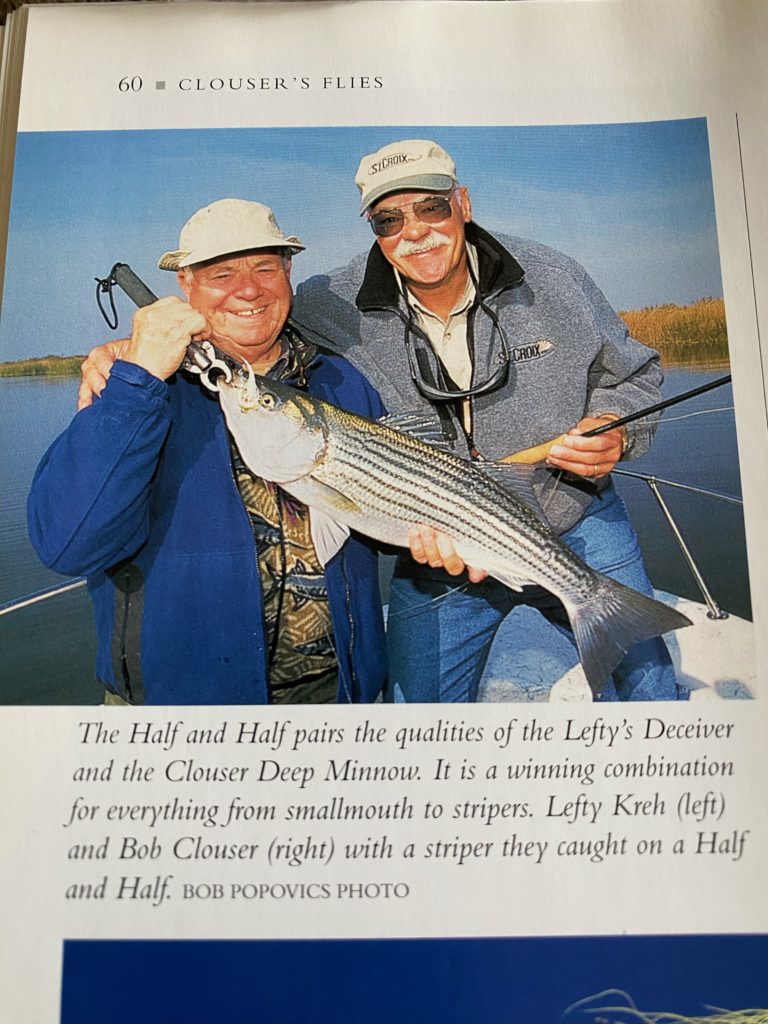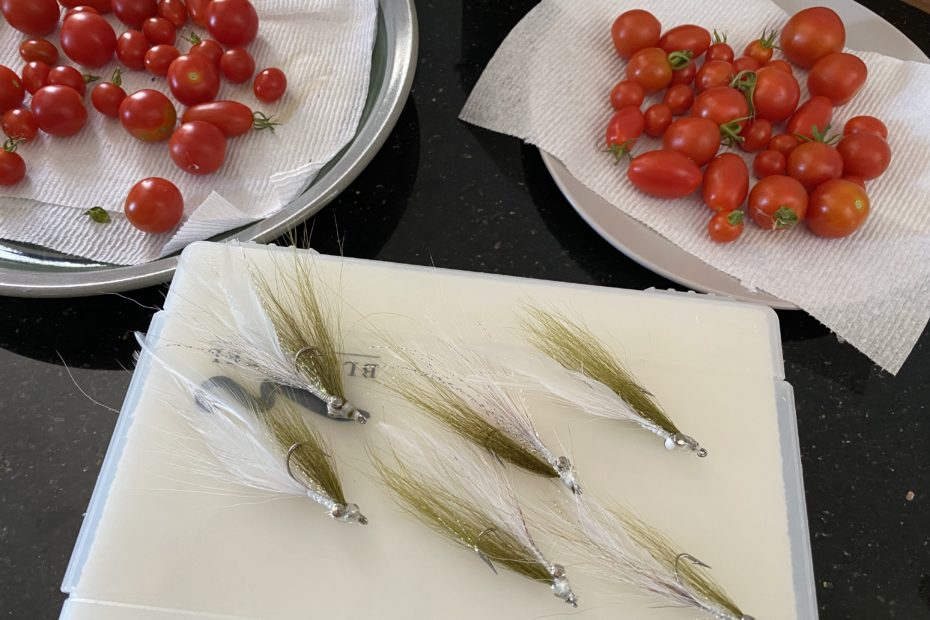How to catch a striped bass? Really? Is there a secret?

And, if there is a secret do you really think I’m going to share it? Well maybe… at least some of it.
As a fly fishing guide, I find that my clients are very interested in trying to “match the hatch”, i.e. use a fly that looks like the bait that the fish are feeding upon. In my less stubborn moments, I “humor” my clients as they cull through their (or my) fly box seeking the fly that best imitates the bait that the stripers are feeding upon. Nevertheless, when I am asked what my favorite fly pattern is I always answer “clouser fly”. Olive & white or chartreuse & white. But let me update that to a “Half & half” ‘cuz my “clousers” have feathers.

Why my flies have feathers is simply because that’s how I tie them. Way back when I was first learning to tie flies, someone showed me how to tie a fly with feathers. For whatever reason, I continue to do so. Actually the reason is simple, these flies catch striped bass!
But really, why? My answer is simply that it is the action that these flies have when they are stripped in. Of course, the action is dictated by the angler’s stripping patterns. And, I can’t say it enough, PAUSE!!!! Strip, strip, PAUSE! Strip, strip, strip, strip, PAUSE. I mean really PAUSE.
Clousers dive on the PAUSE. Those little weighted eyes cause them to dive head first. The strip brings the fly to life and BANG… FISH ON!
Book A Charter with Salty Fly Cape Cod on Barnstable Harbor!
Recently, I had an opportunity to fish along side my client. As always, I took the opportunity to run some “tests”. The first test was to catch a fish using the tried and true 1/2 & 1/2 Clouser pattern. Upon proving the catch-ability of my favorite pattern, I often move on to a “gurgler” fly, a surface fly. Sometimes this is a productive fly, sometimes it isn’t.
On this recent trip, it was evident that the fish were feeding on squid. And although my clouser fly was productive, it seemed the perfect opportunity to try out one of the squid patterns that a friend had tied for me. No go… no fish. The squid fly just pulled its way through the water with virtually no perceivable “action”.
My point is simple. “Matching the hatch” isn’t as important as using a fly that you are able to impart “action”. It is the “action” that attracts the striped bass to the fly.
So, how to catch a striped bass with a fly? PAUSE. And remember, flies are tied for fishermen, not for fish…
